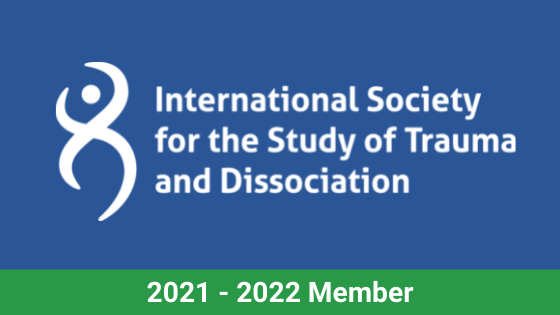Eye Movement Desensitization & Reprocessing (EMDR)
Eye Movement Desensitization and Reprocessing (EMDR) is an evidence based form of psychotherapy designed to treat trauma and reduce negative emotions, anxiety, and other reactions associated with traumatic events.
Clinicians use EMDR to treat the following conditions:
|
|
HOW DOES EMDR WORK?
The goal of EMDR therapy is to leave you with emotions, understanding, and perspectives that lead to healthy and useful behaviors and interactions. EMDR processes unresolved disturbing experiences that cause problems in one's life, to achieve greater mental health. "Processing" in EMDR means setting up a learning state that allows disturbing experiences to be "digested."
When one is very upset, the brain does process information as it does ordinarily. A moment can become "frozen in time." Remembering the trauma can feel as intense as the original experience. These traumatic memories can have a lasting negative effects, interfering with the way one sees the world and relates to others.
EMDR has a direct effect on the way that the brain processes information. Negative emotions, beliefs, and body sensations caused by unresolved experiences can be released. Useful elements are remembered with the processed emotions, guiding one in positive ways. Following successful EMDR treatment, when a previously traumatic event is brought to mind, a person no longer relives the images, sounds, and feelings in real time. One can remember what happened, but the memory becomes less upsetting.
Many types of therapy have similar goals. However, EMDR appears to be similar to what occurs naturally during dreaming or REM (rapid eye movement) sleep. Therefore, EMDR can be thought of as a physiologically based therapy that helps a person see disturbing material in a new and less distressing way.
HOW LONG DOES EMDR TAKE?
One or more sessions are required to understand the reason for seeking treatment and decide whether EMDR is an appropriate treatment. In addition there will be a fuller discussion of EMDR and opportunities to ask and answer questions about the method. If EMDR is an appropriate treatment for a specific issue, EMDR therapy can begin.
A typical EMDR session lasts from 50 to 90 minutes. The type of problem, life circumstances and the amount of previous trauma will determine how many treatment sessions are necessary. EMDR may be used in combination with talk therapy, as a primary therapy, or as an additional treatment in collaboration with an existing therapist.
A typical EMDR session lasts from 50 to 90 minutes. The type of problem, life circumstances and the amount of previous trauma will determine how many treatment sessions are necessary. EMDR may be used in combination with talk therapy, as a primary therapy, or as an additional treatment in collaboration with an existing therapist.
What Happens In EMDR Therapy?
EMDR therapy is an eight-phase treatment. During EMDR therapy sessions, the therapist and client work to identify a specific problem as the focus of treatment. After determining a history related to the identified issue, a therapist determines which memory to target first, Then client calls to mind the disturbing issue or event, what was seen, felt, heard, thought, etc., and what thoughts and beliefs are currently held about that event. The therapist then uses directional eye movements or other bilateral stimulation (buzzers, tapping, or sound), while the client focuses on the identified issue.
This process is believed to be connected with the biological mechanisms involved in Rapid Eye Movement (REM) sleep, when memories are processed in the brain. Some clients describe the process as feeling like a lucid dream or watching a movie of events from their life. In successful EMDR therapy, the memories become less disturbing and the meaning of painful events is transformed on an emotional level.
Sets of eye movements are continued until the memory becomes less disturbing and is associated with positive thoughts and beliefs about one’s self; for example, “I did the best I could.” Each person will process information uniquely, based on personal experiences and values. During EMDR Therapy, the client may experience intense emotions, but by the end of the session, most people report a great reduction in the level of disturbance.
This process is believed to be connected with the biological mechanisms involved in Rapid Eye Movement (REM) sleep, when memories are processed in the brain. Some clients describe the process as feeling like a lucid dream or watching a movie of events from their life. In successful EMDR therapy, the memories become less disturbing and the meaning of painful events is transformed on an emotional level.
Sets of eye movements are continued until the memory becomes less disturbing and is associated with positive thoughts and beliefs about one’s self; for example, “I did the best I could.” Each person will process information uniquely, based on personal experiences and values. During EMDR Therapy, the client may experience intense emotions, but by the end of the session, most people report a great reduction in the level of disturbance.
Does EMDR Really WORK?
Controlled studies have investigated the effects of EMDR and consistently found that EMDR effectively decreases/eliminates the symptoms of post traumatic stress for the majority of clients. Clients often report improvement in other associated symptoms such as anxiety. Research has also shown that EMDR can be an efficient and rapid treatment.
EMDR is an effective treatment for post traumatic stress, according to the current treatment guidelines of the American Psychiatric Association (APA) and the International Society for Traumatic Stress Studies (ISTSS). EMDR was also found effective by the U.S. Department of Veterans Affairs and Department of Defense, the United Kingdom Department of Health, the Israeli National Council for Mental Health, and many other international health and governmental agencies.
EMDR is an effective treatment for post traumatic stress, according to the current treatment guidelines of the American Psychiatric Association (APA) and the International Society for Traumatic Stress Studies (ISTSS). EMDR was also found effective by the U.S. Department of Veterans Affairs and Department of Defense, the United Kingdom Department of Health, the Israeli National Council for Mental Health, and many other international health and governmental agencies.






